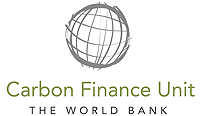Overview
Soil erosion and landslides are major limiting factors from the economic and environmental point of view for land use in the Republic of Moldova. These problems, if allowed to continue, could result in long-term adverse impacts on the land productivity in several parts of the country.
The Moldova Community Forestry Development Project has been implemented as an AR Clean Development Mechanism (CDM) project. The purpose of the project activity has been to create new community forests on the area of 8,468.84 ha by means of reforestation of degraded lands, application of agro-forestry practices, creation of forest protection belts that will enhance GHG removals by sinks, improve forest and pastoral resources at local and regional level, provide wood to the local population, and contribute to local and regional sustainable development.
The project proposed to restore the productivity of several categories of degraded lands such as degraded pastures, glades and abandoned arable lands through AR activities involving native and naturalized locally adaptive species. Based on site productivity, project lands can be categorized under the site productivity classes I, II, III and IV (site productivity class is a unit for the estimation of the productivity of forest stand, is established as a relation between the age and the average height of the forest stand; for every species the yield tables are developed). The poor site quality (III-IV site classes representing low productivity occupy 97% from the total area) along with high degree of degradation consequently represent low productivity.
The species for planting have been selected based on suitability to soil, as well as climate and adaptability to the sites. Local communities also actively participated in species selection. Villagers’ preferences for species were motivated by the following aspects: soil improvement, rotation period time, as well as delivery of social and economic benefits.
Benefits
The project has delivered the following benefits:
- Prevention of future land degradation: The project has prevented landslides, improved hydrological regime and minimized water and wind erosion. The forested areas act as shelter-belts and limit adverse impacts of degraded lands’ soil erosion on adjoining lands.
- Supply of forest products and services: Local population has benefited from increases in supplies of forest products. In the medium to long-term, the project has provided multiple products, services, and income from sale of timber and non-timber products such as medicinal plants, honey from beekeeping etc., and fuelwood supplies to meet the household cooking energy needs of the rural and urban households.
- Community based management of degraded lands: The project activity is made possible with active cooperation of local councils, who own about 94% of lands under the project, and are expected to manage these lands after their transfer from Moldsilva.
- Local employment: The project has created local employment through activities such as planting, weeding, tending, thinning, protection, and harvest of wood. The project has provided employment to men in site preparation, planting and harvesting, and to women in nursery management, weeding, and collection of non-timber forest products.
- Increase in GHG removals in soil and biomass pools: The project activity has enhanced the GHG removals by restoring soil productivity and accrual of above-and below-ground carbon pools.
- Biodiversity conservation: Biodiversity benefits of the project are in terms of protection of threatened species, improvements in ecological succession and habitat restoration of for endangered flora and fauna.
